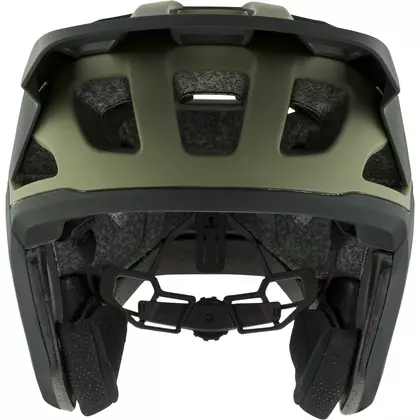History of bicycle helmets
In the past, cycling was associated mainly with free, casual spending time. Safety while riding was not the most important thing, and bicycle helmets were not widely used. However, with the development of technology and changes in public awareness, helmets have become an essential piece of equipment for every cyclist.
The first bicycle helmets appeared at the beginning of the 20th century, but they were heavy and not very comfortable. It wasn't until after World War II, when lightweight and durable materials began to be developed, that helmets became more popular.
In 1975, Bell Helmets introduced the first bicycle helmet that was made of plastic instead of metal or leather. The new material allowed for a significant reduction in the weight of the helmet, which significantly increased its comfort.
Since then, bicycle helmets have undergone further development, both in terms of technology and design. Today, there are helmets suitable for different types of riding, such as road, MTB, triathlon and city helmets.
In some countries, such as Australia, New Zealand or Spain, the wearing of bicycle helmets is mandatory, and failure to comply with this regulation can result in a fine. In other countries, such as Poland, there is no such obligation, but more and more cyclists are aware of the benefits of wearing a helmet and decide to use it.
Today, bicycle helmets are an integral part of the equipment of every cyclist who cares about his safety and health. Without a doubt, they help prevent serious head injuries in the event of an accident.
Is it mandatory to wear a helmet while cycling?
The obligation to wear a helmet on a bicycle varies by country and region. In some places it is obligatory, e.g. for children under a certain age or on certain cycle routes. Elsewhere, bicycle helmets are only recommended or there are no laws governing their wearing. However, regardless of the regulations, it is always worth remembering about your safety and health and riding a bicycle with a helmet.
Should you wear a helmet while cycling?
Yes, it is worth riding a bicycle helmet. Bicycle helmets provide additional head protection in the event of a fall or collision. They can reduce the risk of serious injuries such as brain injuries, skull fractures and facial injuries. This is why many organizations and local authorities require helmets to be worn when cycling.
In addition, wearing a bicycle helmet may be mandatory by law in many countries. Even if it's not required by law, it's still a good idea to wear a helmet to minimize the risk of serious injury in the event of an accident or collision.
A good cycling helmet is one that fits well on the head, has the right amount of ventilation to keep you comfortable while riding, and at the same time offers enough protection.
What types of bicycle helmets are there? ️
There are many types of bicycle helmets on the market, which differ in shape, purpose, technologies and materials used. Below are the most common types of bicycle helmets:
Road bike helmet
A classic, aerodynamic helmet with a smooth surface and low weight, designed for road riding and high-performance competition. The difference between a road bicycle helmet and an MTB/XC helmet lies primarily in the intended use. The road helmet was designed for riding on asphalt roads and high-performance road races, where aerodynamic parameters and low weight are the most important, which allows you to achieve higher speeds.
The MTB/XC helmet, on the other hand, was designed for riding in difficult terrain, such as mountains, forests or difficult paths. This type of helmet is characterized by increased strength and protection to ensure maximum safety in the event of a fall. In addition, the MTB / XC helmet has a visor that protects against the sun and branches, which is important when riding in the field.
Another important difference between a road helmet and an MTB/XC helmet is the number of ventilation openings. A road helmet usually has more of them, because there are no obstacles on asphalt roads that could limit ventilation. In contrast, an MTB/XC helmet usually has fewer vents, as there can be many obstacles in the terrain that can impede ventilation, such as branches, leaves, or mud.
It is worth remembering that when choosing a helmet, you should always take into account the type of riding and the conditions in which you will be riding. A properly selected helmet will increase our safety and driving comfort.
MTB/XC bike helmet
The MTB/XC bicycle helmet is a helmet designed especially for cyclists who ride in difficult terrain, e.g. in the mountains, forests or on difficult routes. This helmet is characterized by increased durability and protection, which is necessary in the event of a possible fall, collision or hitting an obstacle. The MTB/XC bicycle helmet is characterized by an aerodynamic shape and a lightweight structure, which allows you to minimize air resistance and increase efficiency while riding. This helmet usually has a visor that protects against the sun, rain or branches that may occur on the route. MTB/XC helmets have more ventilation openings than fullface helmets, which allows for free air flow and provides the user with thermal comfort during a long ride in difficult terrain.
MTB/XC helmets often feature an adjustment system that allows for precise adjustment of the helmet to the shape of the user's head, as well as inserts that can be easily removed and washed. MTB/XC bicycle helmets are designed for people who ride in difficult terrain, e.g. in the mountains, forests or on difficult routes. They are necessary to ensure safety during such a ride, as well as provide thermal comfort and protection against weather conditions.
To sum up, the MTB/XC bicycle helmet is a helmet of increased durability and protection, designed for riding in difficult terrain, e.g. in the mountains. It is characterized by an aerodynamic shape, lightweight construction and a visor. This helmet is essential for cyclists who ride in difficult terrain and value safety and comfort while riding.
City bike helmet
A city bike helmet is a type of helmet designed for people who travel around the city on a bicycle. These helmets are characterized by a more traditional shape than helmets dedicated to off-road riding, as well as fewer ventilation openings. Thanks to this, city helmets ensure safety when riding in a busy urban environment and protect against rain, wind or pollution.
The weight of a city helmet is usually greater than helmets dedicated to off-road riding and, despite the greater weight, they still provide comfort when riding around the city. City helmets usually have a convenient adjustment system that allows you to adjust the helmet to different head sizes. Many models also have removable inserts that make it easier to keep the helmet clean. City helmets are designed for all users of city bikes, regardless of age or gender. They are especially important for people who travel around the city on a bike every day, because they provide protection in the event of a possible fall or collision with another road user.
All in all, an urban bike helmet is a more traditionally shaped helmet with less ventilation but more weight, designed for urban riders. Thanks to this, users of city bikes can enjoy safety and comfort while riding on busy city streets.
Triathlon helmet
This is a specialized helmet designed for triathletes. It is characterized by an aerodynamic shape that allows you to minimize air resistance and achieve the best results when starting in a triathlon. A triathlon helmet usually has a small number of vents, because aerodynamics is the priority here, not ventilation. Typically, these helmets have only a few vents that allow for minimal cooling of the head. In most cases, a triathlon helmet does not have a visor, because triathletes usually use sunglasses or helmets with built-in lenses to protect the eyes from UV radiation and insects. The triathlon helmet is designed for triathletes who want to achieve the best result during competitions. Due to their specialized construction and characteristic shape, triathlon helmets are used primarily by professional triathletes and people training this sport at a high level.
Full face bicycle helmet
It is a specialized bicycle helmet that provides maximum protection for the face, jaw and neck. It is characterized by full face protection, as well as additional protectors around the temples and chin. The full face helmet is especially popular with off-road enthusiasts, such as downhill or freeride, where the risk of falling and impact is much greater than in the case of road or city riding. Due to its construction, a full face helmet is usually heavier and less ventilated than other types of bicycle helmets, which can affect the comfort of use, especially during long rides in warm weather.
It is also worth remembering that a full face helmet is not suitable for riding a city or road bike, where this type of protection is unnecessary and may limit the field of vision and breathability. To sum up, a full-face bicycle helmet is suitable for lovers of competitive riding in difficult terrain who want to protect their face and neck as much as possible from possible injuries.
Enduro / All mountain bike helmets
It's a helmet designed for off-road riding that combines elements of cross country (XC) and downhill riding. This helmet is characterized by high durability and high protection, especially in the temple and nape area. The difference between an enduro/all mountain helmet and an XC MTB or road helmet is that these helmets are designed for different types of riding. XC MTB helmets are lighter, more ventilated and provide greater freedom of movement, which is important when riding fast in difficult terrain. Road helmets, on the other hand, have an aerodynamic shape, which provides better air penetration and increases the speed of the cyclist.
An enduro/all mountain helmet, on the other hand, is an intermediate solution that combines the features of both types of helmets. It is characterized by more protectors and a more durable construction, which ensures maximum protection in difficult terrain and during possible falls. At the same time, however, this helmet also offers some freedom of movement and the ability to adjust ventilation, which increases comfort while riding. However, it is worth remembering that when choosing a bicycle helmet, you should pay attention to the right size and quality of workmanship to ensure the best protection while cycling.
BMX bicycle helmet
A helmet designed for riders who perform tricks and stunts on BMX. BMX helmets typically have fewer vents than XC MTB or road helmets. While ventilation is not a priority when designing BMX helmets, most helmets feature several vents to help dissipate heat and moisture. However, BMX helmets are designed to provide maximum head protection, not to keep you cool while riding.
BMX helmets are designed for competitive and amateur BMX riders who need maximum head protection during intense riding sessions. Since BMX riding is an extreme sport that requires great precision, physical fitness and technical skills, BMX helmets are exceptionally durable and protected. They are ideal for people who want to compete in BMX competitions, but also for amateurs who practice this form of riding recreationally. It is also worth noting that BMX helmets are not intended for use on the road or off-road, as they do not provide adequate protection in the event of a fall on a hard surface. Therefore, before buying a BMX helmet, make sure that it is suitable for the particular form of riding and the type of terrain on which it will be used.
Bicycle helmet for children
An extremely important piece of equipment for every little cyclist. Children are particularly at risk of injury when cycling, so a bicycle helmet is essential to ensure maximum protection for them on any adventure. Children's bicycle helmets are designed with the youngest riders in mind, which is why they are smaller and lighter than adult helmets. In addition, children's helmets often have additional features such as a padded interior, adjustable straps and a fastening that ensure a perfect fit and comfort while riding. There are different types of children's bicycle helmets, depending on age, size and riding style. For the youngest children, helmets are available for the age of 2-3 years. The small size will ensure optimal fit and safety. For older children, there are bike helmets with a more advanced design, providing more protection at higher speeds and more difficult terrain.
All in all, a children's bicycle helmet is essential for maximum protection when cycling. It is worth remembering that when choosing a helmet for a child, pay attention to the right size, quality of workmanship and safety of certification to ensure maximum protection for your child during each cycling trip.
Cycling helmet for women
Helmets designed specifically for women, with more comfortable, more ergonomic systems to fit the shape of the head. Occurs in all versions described above. Typical women's bicycle helmets are available in smaller sizes than men's, they are also in different colors. In fact, there are no men's bicycle helmets, they are unisex. All unisex helmets fit both women's and men's heads. It's important to choose the right size.
It is worth remembering that when choosing a bicycle helmet, you should pay attention not only to its type, but also to the appropriate size and quality of workmanship to ensure the best protection while cycling.
What is MIPS in a bicycle helmet?
MIPS stands for Multi-Directional Impact Protection System, i.e. a system of protection against impacts from many directions. This technology was developed by the Swedish company MIPS AB and is used in bicycle helmets and other protective helmets, such as ski and snowboard helmets.
The main goal of MIPS technology is to minimize the forces acting on the head during an impact. In standard safety helmets, these forces are absorbed by the helmet's outer shell and an interior such as a foam or liner. However, these helmets do not provide protection against forces acting on the head from different directions, which can lead to serious brain injuries.
MIPS technology is based on the use of a special layer in the helmet that allows the helmet to move independently in relation to the user's head. When the helmet is hit from the side, top or rear, this layer allows the helmet to move in the right direction, minimizing forces on the head and preventing serious brain injuries.
The introduction of MIPS technology in cycling helmets has been positively received by cyclists and the cycling industry. Helmets equipped with this restraint system are more effective in protecting against head injuries and protecting users in the event of cycling accidents.
It is worth noting that MIPS technology is not the only multi-directional impact protection system used in protective helmets. There are also other solutions, such as WaveCel technology or energy-dissipating crowns. However, MIPS technology is one of the most popular and widely used head injury protection systems in bicycle helmets and other safety helmets.
How much does a good bicycle helmet cost?
A bicycle helmet is a basic element of every cyclist's equipment, which protects the head in the event of an accident. However, the price of bicycle helmets can vary greatly depending on quality, features and other factors. In this article, we will discuss how much a good bicycle helmet costs.
The cheapest bicycle helmets can be bought for around 30 euros, but they are usually basic models, made of cheaper materials and with fewer features. In this price category, bicycle helmets are most often made of plastic, with several ventilation holes, and without additional adjustment systems, such as setting the angle of the helmet or adjusting the size. These helmets are usually suitable for beginner cyclists or those who only use the bike occasionally.
The prices of mid-range helmets start from around 50 euros and go up to 100 euros, and top models over 300 euros. In this category you can find bicycle helmets made of better and more durable materials, with more ventilation and more advanced adjustment systems. These helmets are suitable for more advanced cyclists who spend more time on the bike.
The most expensive bicycle helmets, designed for professionals, cost from 100 euros to even several hundred euros. In this category, you can find helmets made of the highest quality materials, such as carbon fibers, with a lot of ventilation and the most advanced adjustment systems, including MIPS technology, as well as head shape adjustment systems or additional covers that increase aerodynamics. These helmets are designed for professional cyclists who need the highest quality protection during training and competition.
In conclusion, the price of a good cycling helmet depends on the quality of the materials, the number of functions and adjustment systems. The cheapest models cost around 30 euros, while the highest-end helmets can cost up to several hundred euros. It is important to choose the right helmet for your needs and requirements, paying attention not only to the price, but also to the quality of workmanship and available features.
How to choose the right size of a bicycle helmet?
A bicycle helmet is one of the most important things every cyclist should have. It protects the head from injuries in the event of a fall or collision, so it is very important that it fits properly to the head.
Choosing the right helmet size is crucial to its effectiveness in the event of an accident. A helmet that is too loose can shift on the head or even slip off during an impact, while a helmet that is too tight can cause discomfort and restrict airflow.
To choose the right size for your bike helmet, first measure your head circumference. To do this, use a tape measure or measuring tape and measure about 2.5 cm above the eyebrow, at the widest part of the head. Remember to hold the measuring tape evenly and not to put too much pressure on your head.
It is worth remembering that different manufacturers may have a slightly different size system, so it is worth checking the manufacturer's size chart before buying a helmet. You can also ask a bicycle shop dealer for help or use online guides that provide step-by-step instructions on how to measure your head circumference.
After choosing the right size, try the helmet on and make sure it fits well on your head. The helmet should adhere to the head, but should not oppress or restrict movement. You should also make sure that the helmet does not move too easily on the head and does not obscure the field of vision.
When it comes to the shape of the helmet, it is worth noting that different models can have different shapes and depending on the structure of the head, not every helmet will fit equally well. Therefore, it is worth trying out several different models and comparing which one fits your head better.
In conclusion, choosing the right size of a bicycle helmet is very important to ensure maximum head protection in the event of a fall or collision.
was mainly associated with free, noncommittal spending time. Safety while riding was not the most important thing, and bicycle helmets were not widely used. However, with the development of technology and changes in public awareness, helmets have become an essential piece of equipment for every cyclist.
The first bicycle helmets appeared at the beginning of the 20th century, but they were heavy and not very comfortable. It wasn't until after World War II, when lightweight and durable materials began to be developed, that helmets became more popular.
In 1975, Bell Helmets introduced the first bicycle helmet that was made of plastic instead of metal or leather. The new material allowed for a significant reduction in the weight of the helmet, which significantly increased its comfort.
Since then, bicycle helmets have undergone further development, both in terms of technology and design. Today, there are helmets suitable for different types of riding, such as road, MTB, triathlon and city helmets.
In some countries, such as Australia, New Zealand or Spain, the wearing of bicycle helmets is mandatory, and failure to comply with this regulation can result in a fine. In other countries, such as Poland, there is no such obligation, but more and more cyclists are aware of the benefits of wearing a helmet and decide to use it.
Today, bicycle helmets are an integral part of the equipment of every cyclist who cares about his safety and health. Without a doubt, they help prevent serious head injuries in the event of an accident.
Is it mandatory to wear a helmet while cycling?
The obligation to wear a helmet on a bicycle varies by country and region. In some places it is obligatory, e.g. for children under a certain age or on certain cycle routes. Elsewhere, bicycle helmets are only recommended or there are no laws governing their wearing. However, regardless of the regulations, it is always worth remembering about your safety and health and riding a bicycle with a helmet.
Should you wear a helmet while cycling?
Yes, it is worth riding a bicycle helmet. Bicycle helmets provide additional head protection in the event of a fall or collision. They can reduce the risk of serious injuries such as brain injuries, skull fractures and facial injuries. This is why many organizations and local authorities require helmets to be worn when cycling.
In addition, wearing a bicycle helmet may be mandatory by law in many countries. Even if it's not required by law, it's still a good idea to wear a helmet to minimize the risk of serious injury in the event of an accident or collision.
A good cycling helmet is one that fits well on the head, has the right amount of ventilation to keep you comfortable while riding, and at the same time offers enough protection.
What types of bicycle helmets are there? ️
There are many types of bicycle helmets on the market, which differ in shape, purpose, technologies and materials used. Below are the most common types of bicycle helmets:
Road bicycle helmet
A classic, aerodynamic helmet with a smooth surface and low weight, designed for road riding and high-performance competition. The difference between a road bicycle helmet and an MTB/XC helmet lies primarily in the intended use. The road helmet was designed for riding on asphalt roads and high-performance road races, where aerodynamic parameters and low weight are the most important, which allows you to achieve higher speeds.
The MTB/XC helmet, on the other hand, was designed for riding in difficult terrain, such as mountains, forests or difficult paths. This type of helmet is characterized by increased strength and protection to ensure maximum safety in the event of a fall. In addition, the MTB / XC helmet has a visor that protects against the sun and branches, which is important when riding in the field.
Another important difference between a road helmet and an MTB/XC helmet is the number of ventilation openings. A road helmet usually has more of them, because there are no obstacles on asphalt roads that could limit ventilation. In contrast, an MTB/XC helmet usually has fewer vents, as there can be many obstacles in the terrain that can impede ventilation, such as branches, leaves, or mud.
It is worth remembering that when choosing a helmet, you should always take into account the type of riding and the conditions in which you will be riding. A properly selected helmet will increase our safety and driving comfort.
MTB/XC bicycle helmet
The MTB/XC bicycle helmet is a helmet designed especially for cyclists who ride in difficult terrain, e.g. in the mountains, forests or on difficult routes. This helmet is characterized by increased durability and protection, which is necessary in the event of a possible fall, collision or hitting an obstacle. The MTB/XC bicycle helmet is characterized by an aerodynamic shape and a lightweight structure, which allows you to minimize air resistance and increase efficiency while riding. This helmet usually has a visor that protects against the sun, rain or branches that may occur on the route. MTB/XC helmets have more ventilation openings than fullface helmets, which allows for free air flow and provides the user with thermal comfort during a long ride in difficult terrain.
MTB/XC helmets often feature an adjustment system that allows for precise adjustment of the helmet to the shape of the user's head, as well as inserts that can be easily removed and washed. MTB/XC bicycle helmets are designed for people who ride in difficult terrain, e.g. in the mountains, forests or on difficult routes. They are necessary to ensure safety during such a ride, as well as provide thermal comfort and protection against weather conditions.
To sum up, the MTB/XC bicycle helmet is a helmet of increased durability and protection, designed for riding in difficult terrain, e.g. in the mountains. It is characterized by an aerodynamic shape, lightweight construction and a visor. This helmet is essential for cyclists who ride in difficult terrain and value safety and comfort while riding.
City bike helmet
A city bike helmet is a type of helmet designed for people who travel around the city on a bicycle. These helmets are characterized by a more traditional shape than helmets dedicated to off-road riding, as well as fewer ventilation openings. Thanks to this, city helmets ensure safety when riding in a busy urban environment and protect against rain, wind or pollution.
The weight of a city helmet is usually greater than helmets dedicated to off-road riding and, despite the greater weight, they still provide comfort when riding around the city. City helmets usually have a convenient adjustment system that allows you to adjust the helmet to different head sizes. Many models also have removable inserts that make it easier to keep the helmet clean. City helmets are designed for all users of city bikes, regardless of age or gender. They are especially important for people who travel around the city on a bike every day, because they provide protection in the event of a possible fall or collision with another road user.
All in all, an urban bike helmet is a more traditionally shaped helmet with less ventilation but more weight, designed for urban riders. Thanks to this, users of city bikes can enjoy safety and comfort while riding on busy city streets.
Triathlon helmet
This is a specialized helmet designed for triathletes. It is characterized by an aerodynamic shape that allows you to minimize air resistance and achieve the best results when starting in a triathlon. A triathlon helmet usually has a small number of vents, because aerodynamics is the priority here, not ventilation. Typically, these helmets have only a few vents that allow for minimal cooling of the head. In most cases, a triathlon helmet does not have a visor, because triathletes usually use sunglasses or helmets with built-in lenses to protect the eyes from UV radiation and insects. The triathlon helmet is designed for triathletes who want to achieve the best result during competitions. Due to their specialized construction and characteristic shape, triathlon helmets are used primarily by professional triathletes and people training this sport at a high level.
Full face bicycle helmet
It is a specialized bicycle helmet that provides maximum protection for the face, jaw and neck. It is characterized by full face protection, as well as additional protectors around the temples and chin. The full face helmet is especially popular with off-road enthusiasts, such as downhill or freeride, where the risk of falling and impact is much greater than in the case of road or city riding. Due to its construction, a full face helmet is usually heavier and less ventilated than other types of bicycle helmets, which can affect the comfort of use, especially during long rides in warm weather.
It is also worth remembering that a full face helmet is not suitable for riding a city or road bike, where this type of protection is unnecessary and may limit the field of vision and breathability. To sum up, a full-face bicycle helmet is suitable for lovers of competitive riding in difficult terrain who want to protect their face and neck as much as possible from possible injuries.
Enduro / All mountain bike helmets
It's a helmet designed for off-road riding that combines elements of cross country (XC) and downhill riding. This helmet is characterized by high durability and high protection, especially in the temple and nape area. The difference between an enduro/all mountain helmet and an XC MTB or road helmet is that these helmets are designed for different types of riding. XC MTB helmets are lighter, more ventilated and provide greater freedom of movement, which is important when riding fast in difficult terrain. Road helmets, on the other hand, have an aerodynamic shape, which provides better air penetration and increases the speed of the cyclist.
An enduro/all mountain helmet, on the other hand, is an intermediate solution that combines the features of both types of helmets. It is characterized by more protectors and a more durable construction, which ensures maximum protection in difficult terrain and during possible falls. At the same time, however, this helmet also offers some freedom of movement and the ability to adjust ventilation, which increases comfort while riding. However, it is worth remembering that when choosing a bicycle helmet, you should pay attention to the right size and quality of workmanship to ensure the best protection while cycling.
BMX bicycle helmet
A helmet designed for riders who perform tricks and stunts on BMX. BMX helmets typically have fewer vents than XC MTB or road helmets. While ventilation is not a priority when designing BMX helmets, most helmets feature several vents to help dissipate heat and moisture. However, BMX helmets are designed to provide maximum head protection, not to keep you cool while riding.
BMX helmets are designed for competitive and amateur BMX riders who need maximum head protection during intense riding sessions. Since BMX riding is an extreme sport that requires great precision, physical fitness and technical skills, BMX helmets are exceptionally durable and protected. They are ideal for people who want to compete in BMX competitions, but also for amateurs who practice this form of riding recreationally. It is also worth noting that BMX helmets are not intended for use on the road or off-road, as they do not provide adequate protection in the event of a fall on a hard surface. Therefore, before buying a BMX helmet, make sure that it is suitable for the particular form of riding and the type of terrain on which it will be used.
Bicycle helmet for children
An extremely important piece of equipment for every little cyclist. Children are particularly at risk of injury when cycling, so a bicycle helmet is essential to ensure maximum protection for them on any adventure. Children's bicycle helmets are designed with the youngest riders in mind, which is why they are smaller and lighter than adult helmets. In addition, children's helmets often have additional features such as a padded interior, adjustable straps and a fastening that ensure a perfect fit and comfort while riding. There are different types of children's bicycle helmets, depending on age, size and riding style. For the youngest children, helmets are available for the age of 2-3 years. The small size will ensure optimal fit and safety. For older children, there are bike helmets with a more advanced design, providing more protection at higher speeds and more difficult terrain.
All in all, a children's bicycle helmet is essential for maximum protection when cycling. It is worth remembering that when choosing a helmet for a child, pay attention to the right size, quality of workmanship and safety of certification to ensure maximum protection for your child during each cycling trip.
Cycling helmet for women
Helmets designed specifically for women, with more comfortable, more ergonomic systems to fit the shape of the head. Occurs in all versions described above. Typical women's bicycle helmets are available in smaller sizes than men's, they are also in different colors. In fact, there are no men's bicycle helmets, they are unisex. All unisex helmets fit both women's and men's heads. It's important to choose the right size.
It is worth remembering that when choosing a bicycle helmet, you should pay attention not only to its type, but also to the appropriate size and quality of workmanship to ensure the best protection while cycling.
How much does a good bicycle helmet cost?
A bicycle helmet is a basic element of every cyclist's equipment, which protects the head in the event of an accident. However, the price of bicycle helmets can vary greatly depending on quality, features and other factors. In this article, we will discuss how much a good bicycle helmet costs.
The cheapest bicycle helmets can be purchased for around PLN 100, but they are usually basic models, made of cheaper materials and with fewer functions. In this price category, bicycle helmets are most often made of plastic, with several ventilation holes, and without additional adjustment systems, such as setting the angle of the helmet or adjusting the size. These helmets are usually suitable for beginner cyclists or those who only use the bike occasionally.
The prices of mid-range helmets start from around PLN 200-300 and reach even PLN 500, and top models over PLN 1,000. In this category you can find bicycle helmets made of better and more durable materials, with more ventilation and more advanced adjustment systems. These helmets are suitable for more advanced cyclists who spend more time on the bike.
The most expensive bicycle helmets, designed for professionals, cost from PLN 500 to even several thousand zlotys. In this category, you can find helmets made of the highest quality materials, such as carbon fibers, with a lot of ventilation and the most advanced adjustment systems, including MIPS technology, as well as head shape adjustment systems or additional covers that increase aerodynamics. These helmets are designed for professional cyclists who need the highest quality protection during training and competition.
In conclusion, the price of a good cycling helmet depends on the quality of the materials, the number of functions and adjustment systems. The cheapest models cost about PLN 100, while the highest-class helmets can cost even several thousand zlotys. It is important to choose the right helmet for your needs and requirements, paying attention not only to the price, but also to the quality of workmanship and available features.
How to choose the right size of a bicycle helmet?
A bicycle helmet is one of the most important things every cyclist should have. It protects the head from injuries in the event of a fall or collision, so it is very important that it fits properly to the head.
Choosing the right helmet size is crucial to its effectiveness in the event of an accident. A helmet that is too loose can shift on the head or even slip off during an impact, while a helmet that is too tight can cause discomfort and restrict airflow.
To choose the right size for your bike helmet, first measure your head circumference. To do this, use a tape measure or measuring tape and measure about 2.5 cm above the eyebrow, at the widest part of the head. Remember to hold the measuring tape evenly and not to put too much pressure on your head.
It is worth remembering that different manufacturers may have a slightly different size system, so it is worth checking the manufacturer's size chart before buying a helmet. You can also ask a bicycle shop dealer for help or use online guides that provide detailed instructions on how to measure your head circumference.
Once you have chosen the right size, try the helmet on and make sure it fits well on your head. The helmet should adhere to the head, but should not oppress or restrict movement. You should also make sure that the helmet does not move too easily on the head and does not obscure the field of vision.
When it comes to the shape of the helmet, it is worth noting that different models can have different shapes and depending on the structure of the head, not every helmet will fit equally well. Therefore, it is worth trying out several different models and comparing which one fits your head better.
In conclusion, choosing the right size of a bicycle helmet is very important to ensure maximum head protection in the event of a fall or collision.
.png?1677767993)
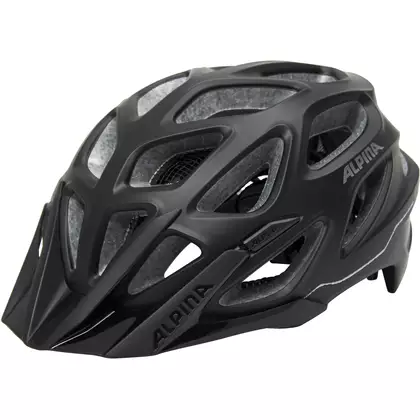
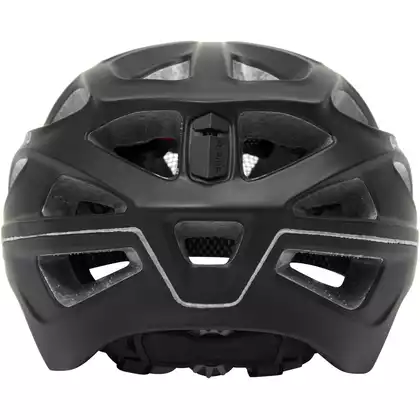
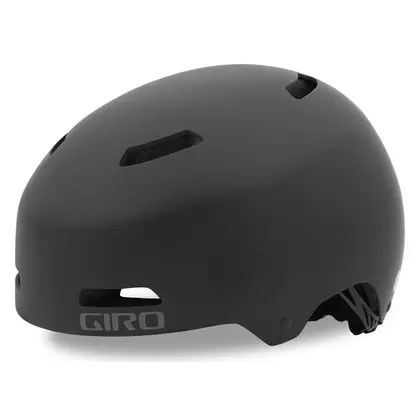
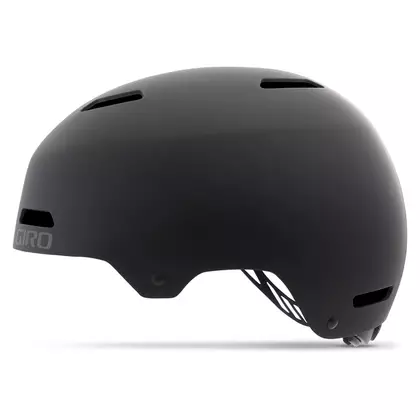
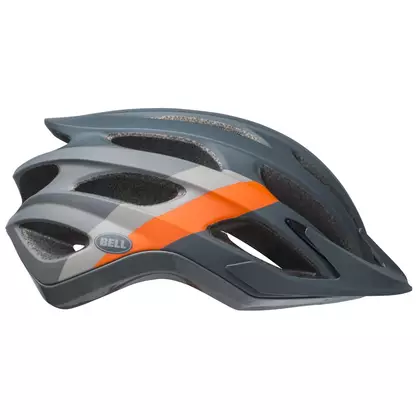
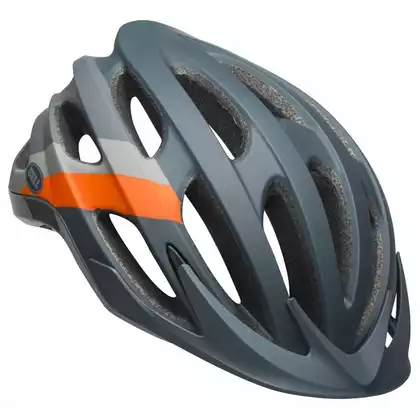
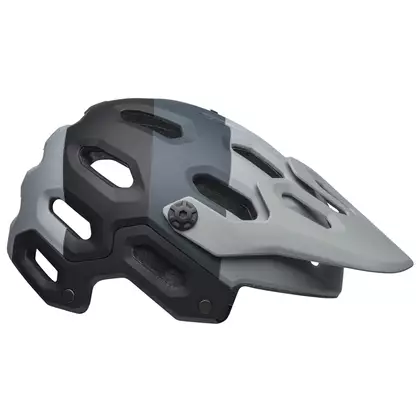
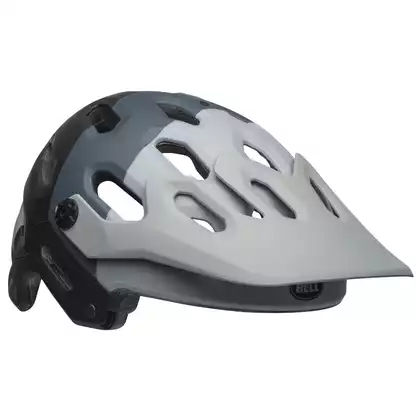
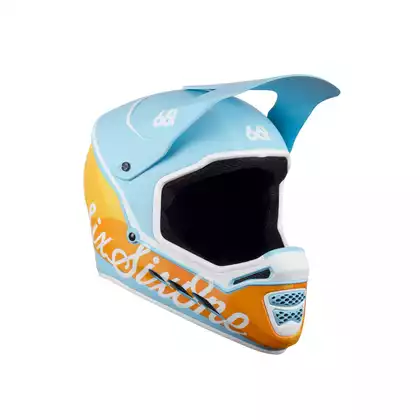
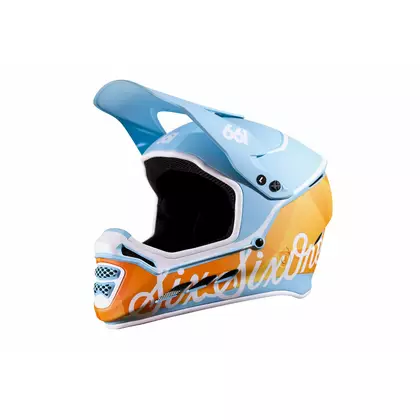
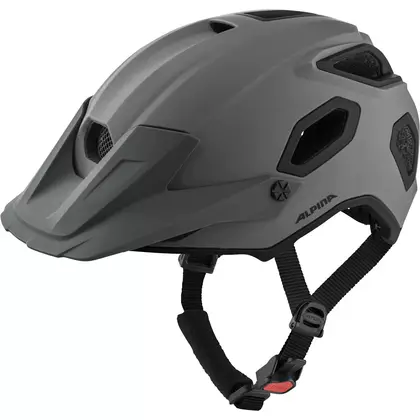
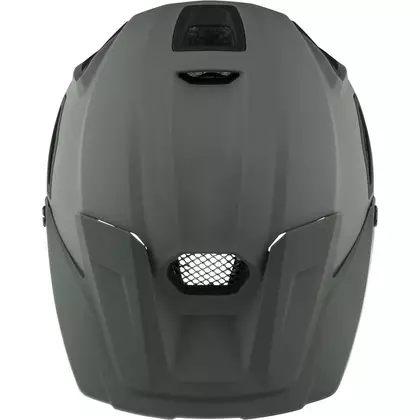
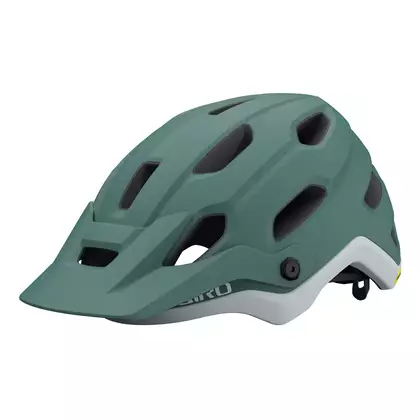
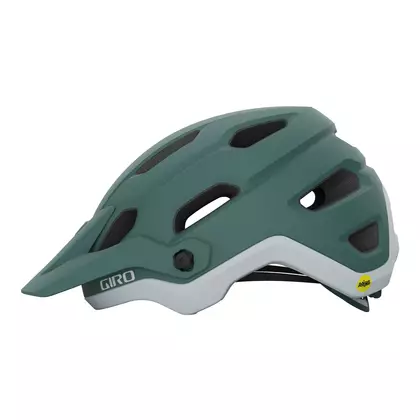
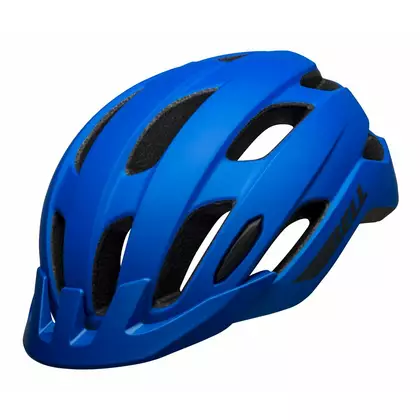
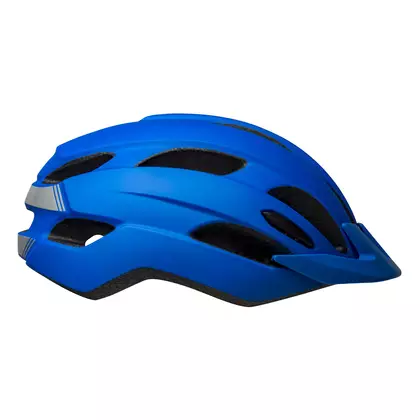
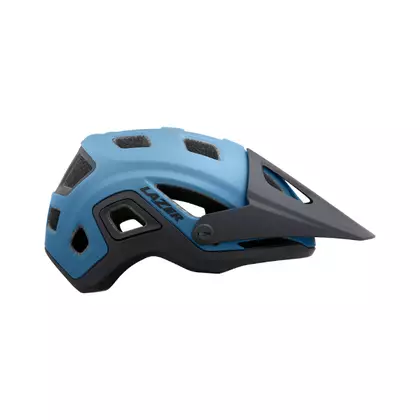
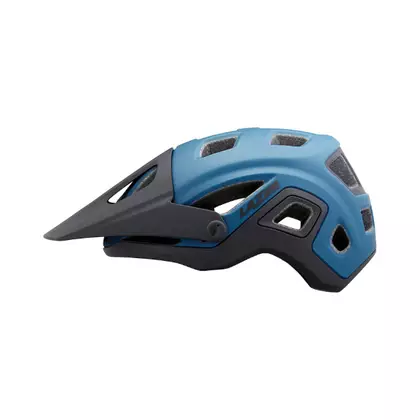
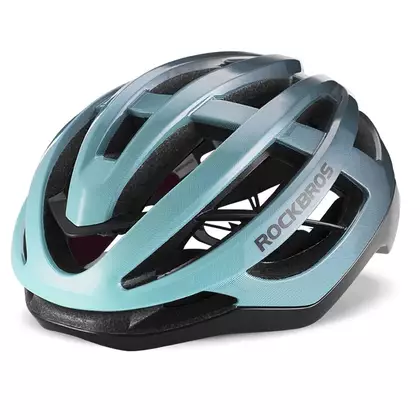
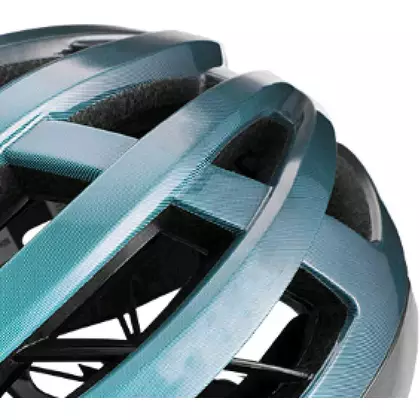
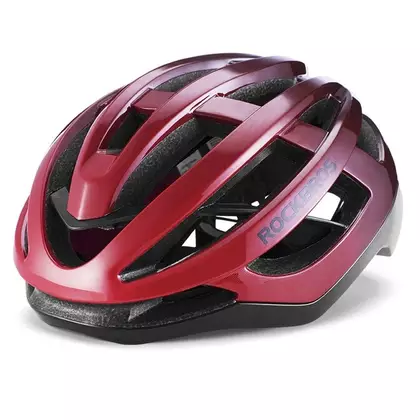

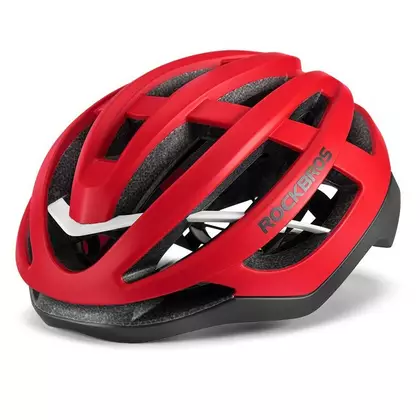
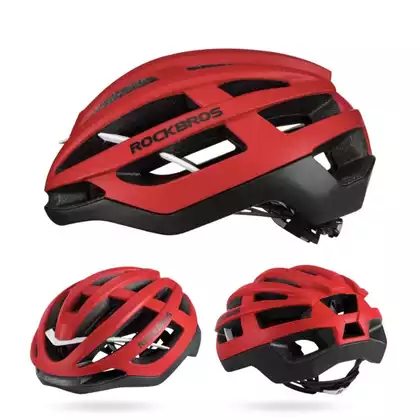
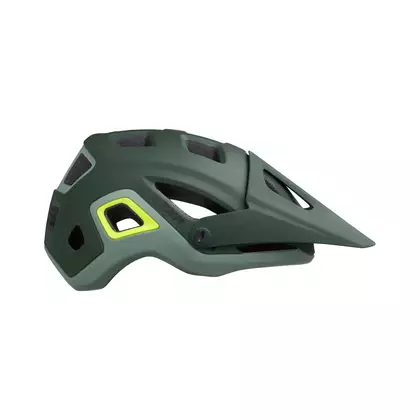
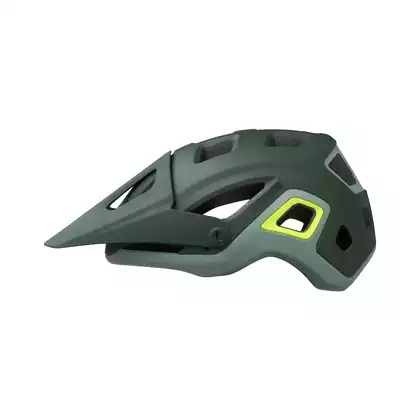
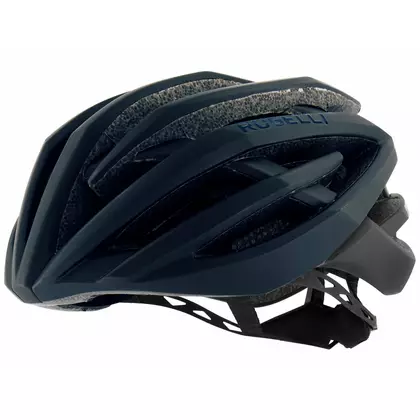
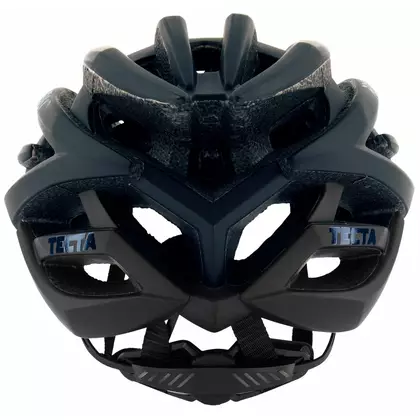
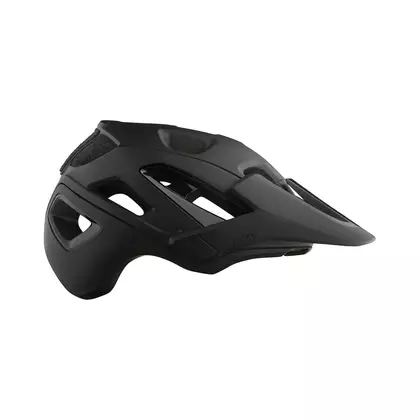
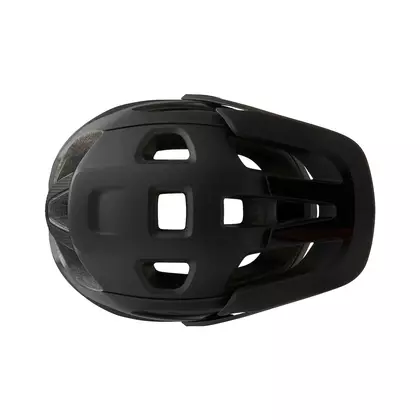
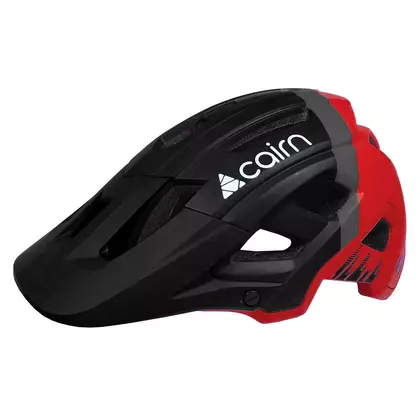
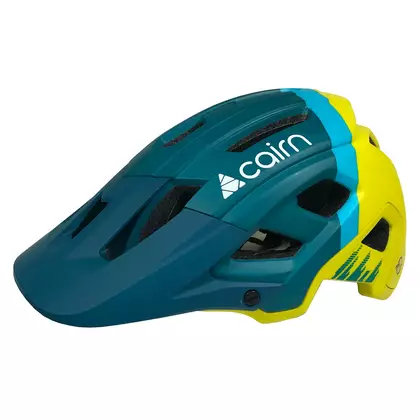
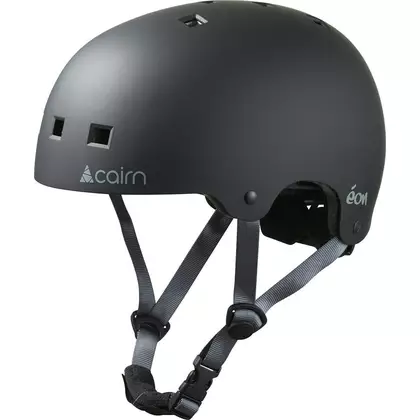
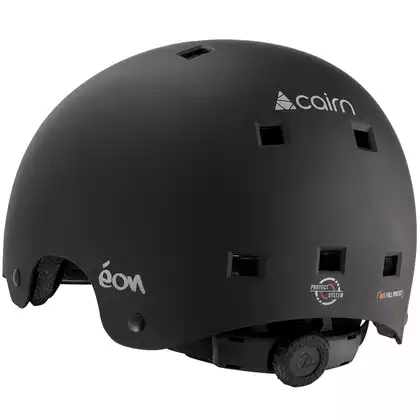
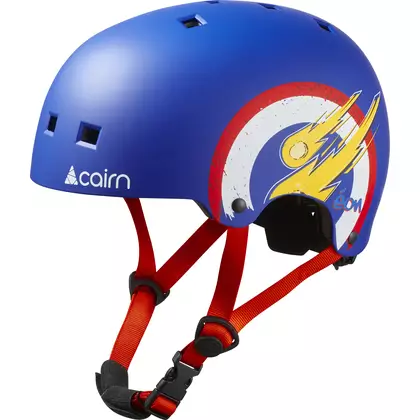
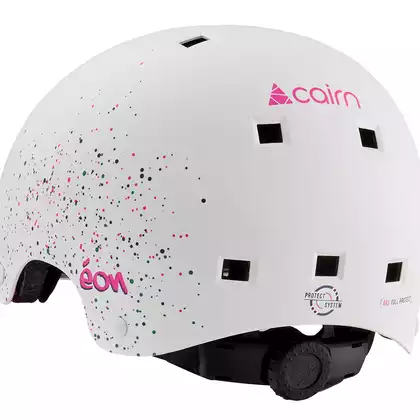
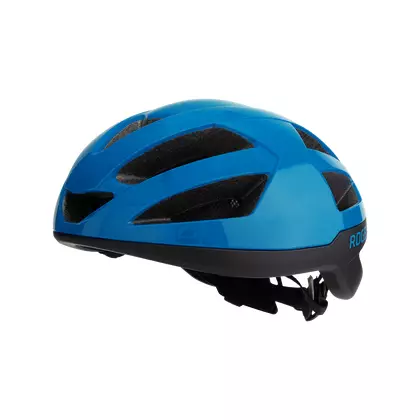
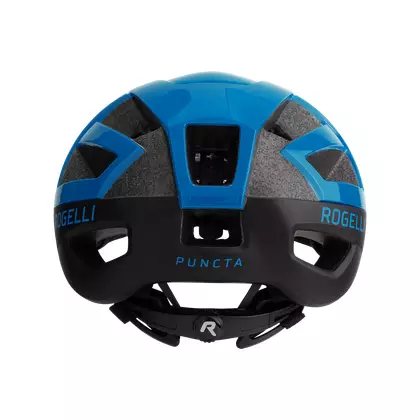
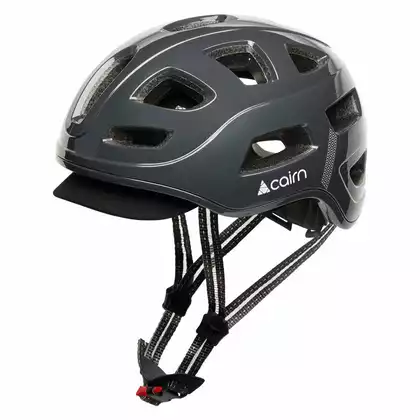
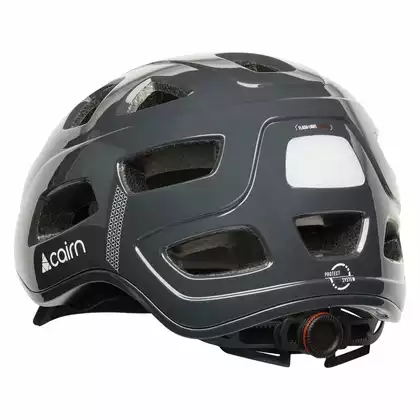
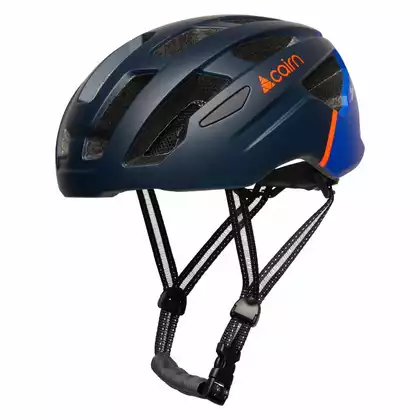
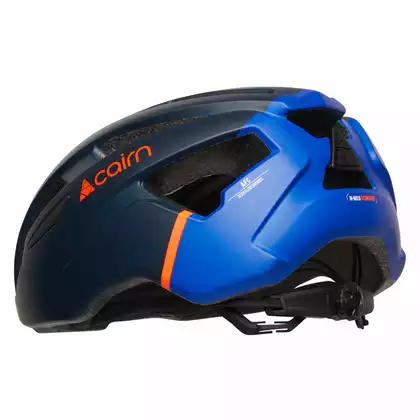
-420x420.webp)
